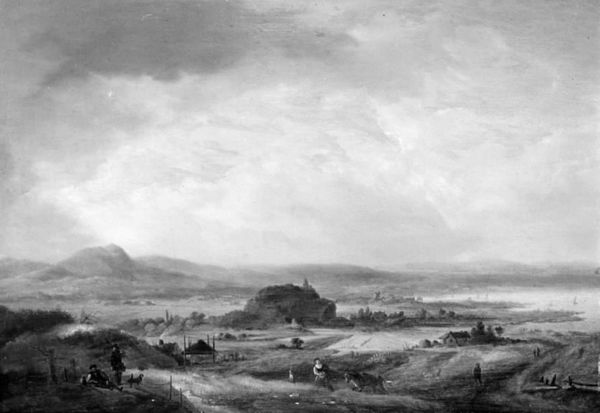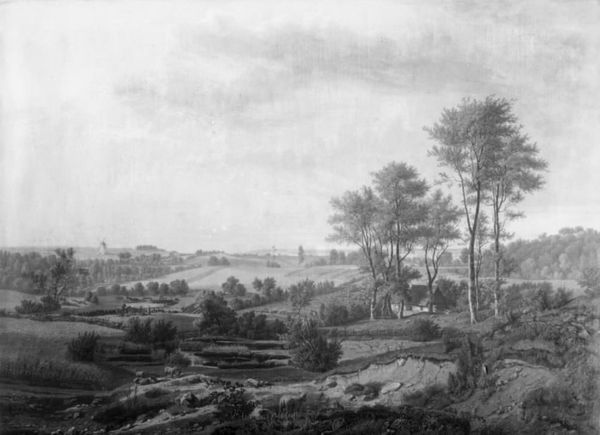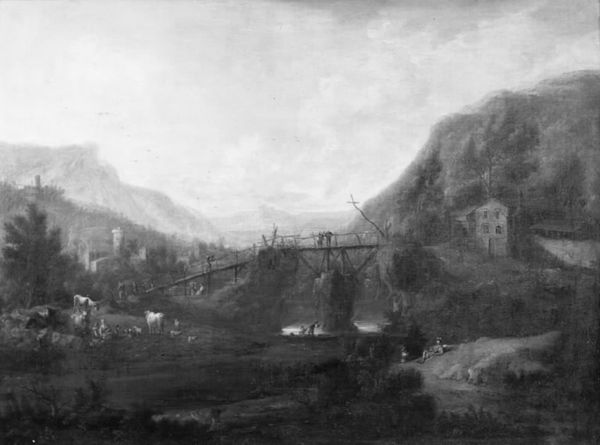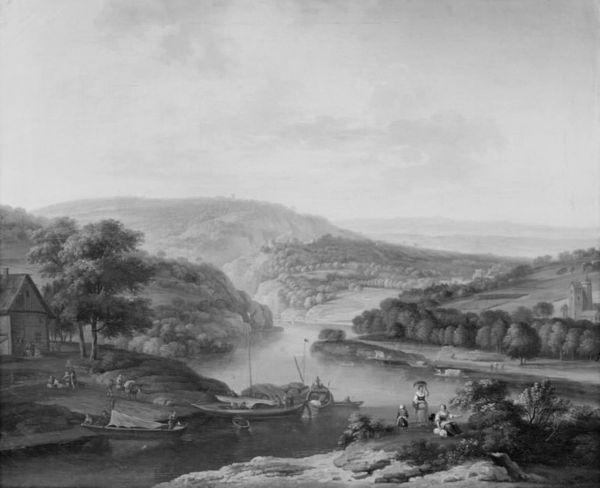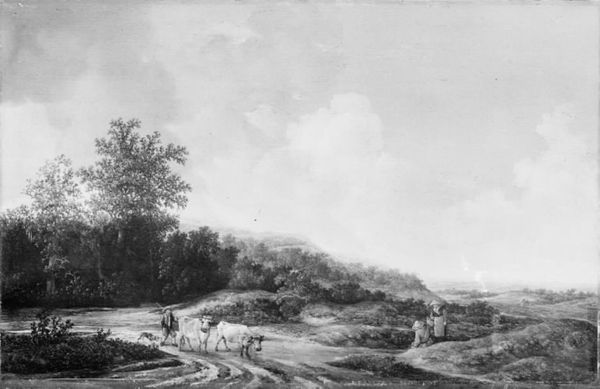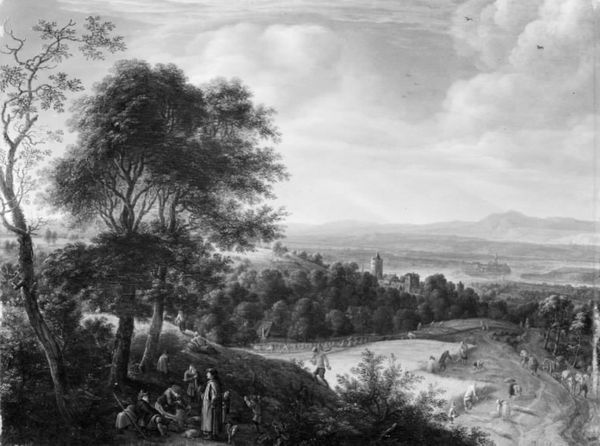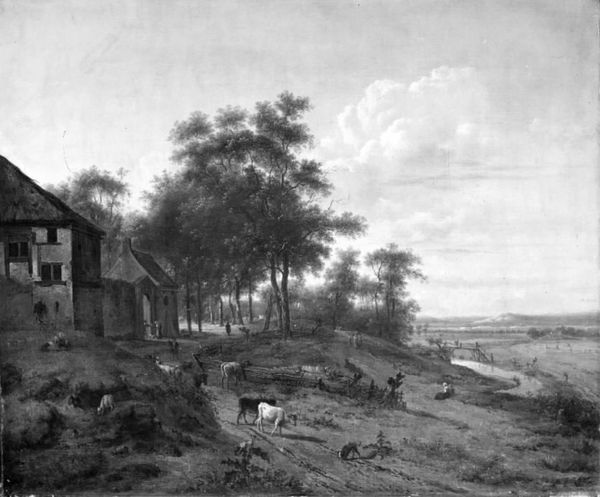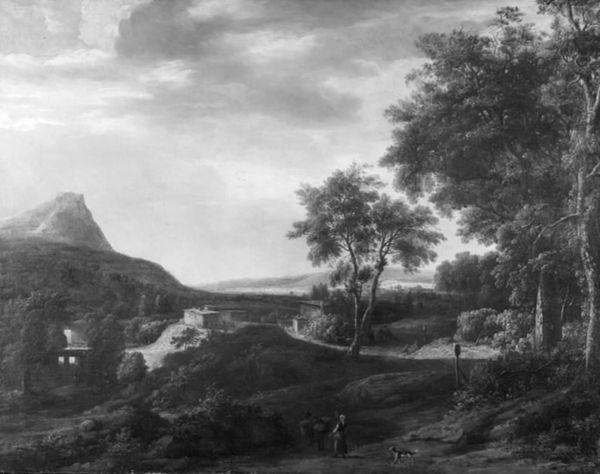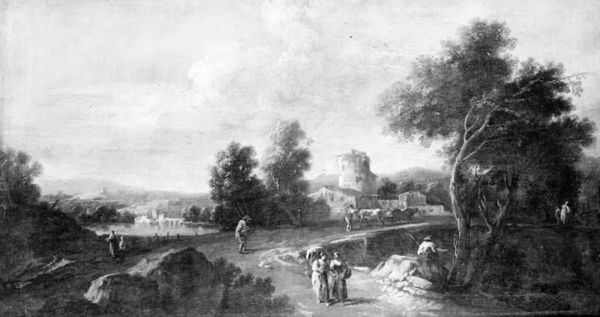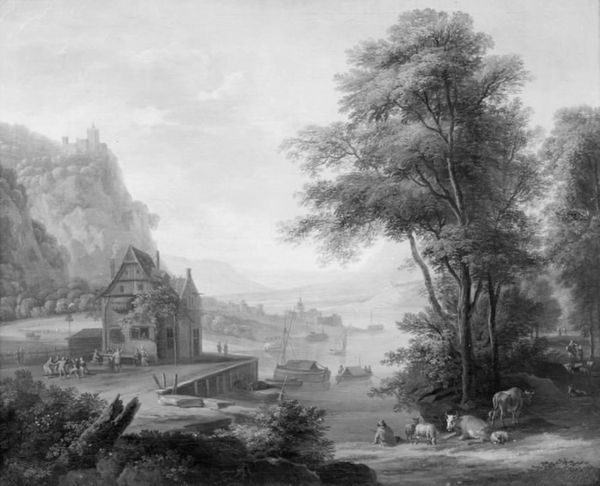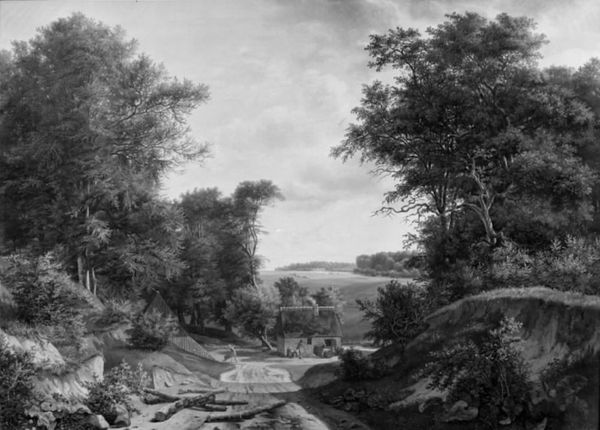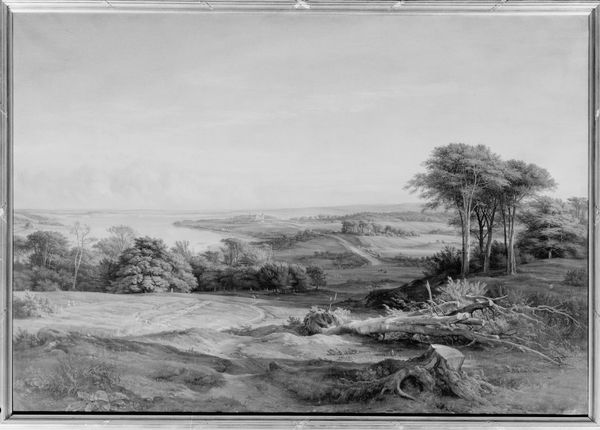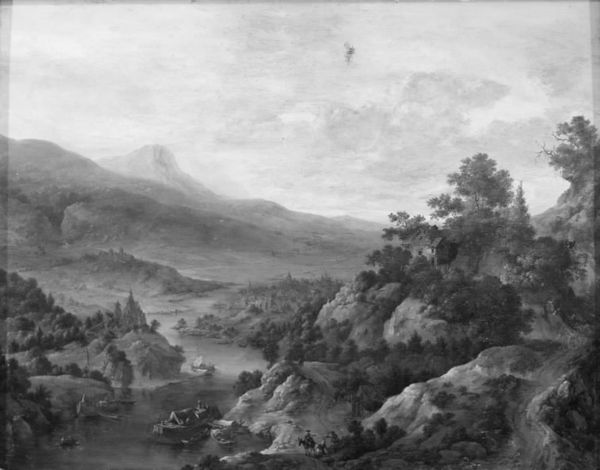
painting, wood
#
baroque
#
painting
#
countryside
#
landscape
#
black and white
#
monochrome photography
#
wood
#
genre-painting
#
monochrome
#
monochrome
Dimensions: 25 cm (height) x 35.5 cm (width) (Netto)
Curator: It's striking how a monochrome palette can still evoke such depth of emotion. Editor: Absolutely. At first glance, it feels bleak, almost desolate. What can you tell me about Johann Salomon Wahl’s "Flodlandskab," made sometime between 1704 and 1765? Curator: Wahl's landscapes are often rooted in a close observation of nature but filtered through the aesthetic lens of the baroque. Note how he uses stark contrast between light and shadow. That interplay creates visual drama but also guides the viewer's eye through the composition. The dark foreground pushes us toward the lighter, distant vista. Editor: The figures populating this "Flodlandskab," some on horseback, others seemingly engaged in labor—they feel less like subjects and more like symbolic markers of societal hierarchy within this landscape. The painting, to me, feels like it comments on land use and the relationship between people and environment during the 18th century. It's easy to get caught up in aesthetics and not remember there are complicated power structures within that frame. Curator: That's an excellent point. Landscape, especially in the baroque, wasn't just about pretty scenery. The images and narratives were often interwoven with themes of possession, dominion, even divine right. What looks natural is deeply coded. And of course, color itself can be highly symbolic but that is not obvious here given that is in black and white, or monotone style. Editor: Even the very idea of landscape, framing it as something aesthetically pleasing – who gets to define that beauty, who gets to access it, and at what cost? Are those houses in the distance peasant dwellings or the homes of wealthy landowners surveying their holdings? Curator: Those are critical questions to consider when viewing paintings like these. Thinking of land as property certainly gained traction during the baroque era. Perhaps seeing it this way, as you noted before, adds to the bleakness. Editor: It definitely changes the way I see the painting. Knowing these visual elements have historical roots pushes me to question the narratives promoted in our culture. This image prompts discussions about what it meant to live during the artist's time and encourages a reevaluation of those cultural values and ideologies. Curator: For me, this piece creates continuity to landscape paintings across centuries. Wahl, perhaps unintentionally, touches upon a struggle between human agency and the enduring, timeless power of nature.
Comments
No comments
Be the first to comment and join the conversation on the ultimate creative platform.
